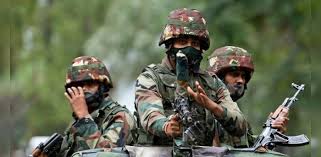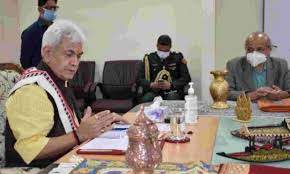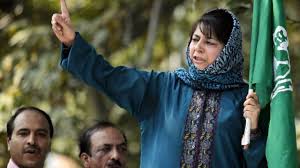Top News
Terrorists kill 17 soldiers, India blames Pakistan
 Uri (Jammu and Kashmir) : Terrorists sneaked into an army camp here in Jammu and Kashmir early on Friday and slaughtered 17 soldiers in the worst attack on a military centre in the state in a decade.
Uri (Jammu and Kashmir) : Terrorists sneaked into an army camp here in Jammu and Kashmir early on Friday and slaughtered 17 soldiers in the worst attack on a military centre in the state in a decade.
Over two dozen soldiers were also injured in the audacious attack that left all four heavily-armed militants who barged into the camp near Uri town at 5.30 a.m. dead after two-and-a-half hours, military officials said.
Echoing the nation’s anguish, Prime Minister Narendra Modi strongly condemned the “cowardly terror attack” and assured “the nation that those behind this despicable attack will not go unpunished”.
Modi refrained from saying who was to blame for the bloodbath but Home Minister Rajnath Singh held Pakistan responsible.
“I am deeply disappointed with Pakistan’s continued and direct support to terrorism and terrorist groups. Pakistan is a terrorist state and it should be identified and isolated as such,” the minister tweeted.
Uri is close to the Line of Control (LoC), which divides Jammu and Kashmir between India and Pakistan. The camp is close to the headquarters of army’s 12 Brigade.
According to military sources, the terrorists entered the camp from the rear after cutting the barbed wire fencing — without the sentries getting alerted.
After entering the camp, the gunmen resorted to indiscriminate automatic gunfire from AK-47 rifles after quickly spreading in different directions inside to inflict maximum damage.
They also hurled grenades at tents where soldiers were asleep, catching them unawares.
The maximum casualties were reportedly caused not by AK-47s but after the grenades set off explosives stored inside the tented accommodation.
The exact number of troops inside the camp at the time of the attack was not known but one source estimated there must have been around 200 because most of the infantry battalion is deployed on the LoC.
The sneak attack sent huge columns of black smoke rising into the sky.
A terse statement issued by the Northern Command based at Udhampur said “heavily armed terrorists targeted the rear administrative base of a unit at Uri.
“In the counter action, four terrorists have been eliminated and combing operations are in progress.
“The administrative base had a large strength of troops of units turning over after their tour of duty who were stationed in tents/temporary shelters which caught fire and resulted in heavy casualties.
“We salute the sacrifices of 17 soldiers who were martyred in the operation.”
Unofficial sources said most of the dead soldiers were from the Bihar Regiment. Two soldiers of the Dogra Regiment also died.
After the fighting died down, soldiers continued to comb the camp looking for other militants who may be hiding as well as explosives they may have planted.
No guerrilla group claimed responsibility for the bloodbath. But some reports said the guerrillas had recently infiltrated into the Indian side of the LoC from Pakistan.
A military expert, retired Lt. Gen. Raj Kadyan, said it was time to teach Pakistan a lesson.
Calling the attack the “most serious in the last decade”, he said: “The response required today is a tough one. The army should launch a strike at a place and time of its choosing. Retribution should be quick and severe.”
Helicopters flew the injured soldiers from Uri to the army’s base hospital in Srinagar, about 70 km away.
Within hours, army chief General Dalbir Singh flew to Srinagar and then went to Uri.
In a related development, Union Home Minister Rajnath Singh cancelled his visit to the US and Russia. He later presided over a high-level meeting also attended by National Security Advisor Ajit Doval.
“Keeping the situation of Jammu and Kashmir in mind and in the wake of the terror attack in Uri, I have postponed my visits to Russia and the US.”
He also spoke to Jammu and Kashmir Governor N.N. Vohra and Chief Minister Mehbooba Mufti. “They have apprised me of the security situation in the state,” he said.
Entertainment
Casino Days Reveal Internal Data on Most Popular Smartphones

International online casino Casino Days has published a report sharing their internal data on what types and brands of devices are used to play on the platform by users from the South Asian region.
Such aggregate data analyses allow the operator to optimise their website for the brands and models of devices people are actually using.
The insights gained through the research also help Casino Days tailor their services based on the better understanding of their clients and their needs.
Desktops and Tablets Lose the Battle vs Mobile
The primary data samples analysed by Casino Days reveal that mobile connections dominate the market in South Asia and are responsible for a whopping 96.6% of gaming sessions, while computers and tablets have negligible shares of 2.9% and 0.5% respectively.
The authors of the study point out that historically, playing online casino was exclusively done on computers, and attribute thе major shift to mobile that has unfolded over time to the wide spread of cheaper smartphones and mobile data plans in South Asia.
“Some of the reasons behind this massive difference in device type are affordability, technical advantages, as well as cheaper and more obtainable internet plans for mobiles than those for computers,” the researchers comment.
Xiaomi and Vivo Outperform Samsung, Apple Way Down in Rankings
Chinese brands Xiaomi and Vivo were used by 21.9% and 20.79% of Casino Days players from South Asia respectively, and together with the positioned in third place with a 18.1% share South Korean brand Samsung dominate the market among real money gamers in the region.
Cupertino, California-based Apple is way down in seventh with a user share of just 2.29%, overshadowed by Chinese brands Realme (11.43%), OPPO (11.23%), and OnePlus (4.07%).
Huawei is at the very bottom of the chart with a tiny share just below the single percent mark, trailing behind mobile devices by Motorola, Google, and Infinix.
The data on actual phone usage provided by Casino Days, even though limited to the gaming parts of the population of South Asia, paints a different picture from global statistics on smartphone shipments by vendors.
Apple and Samsung have been sharing the worldwide lead for over a decade, while current regional leader Xiaomi secured their third position globally just a couple of years ago.
Striking Android Dominance among South Asian Real Money Gaming Communities
The shifted market share patterns of the world’s top smartphone brands in South Asia observed by the Casino Days research paper reveal a striking dominance of Android devices at the expense of iOS-powered phones.
On the global level, Android enjoys a comfortable lead with a sizable 68.79% share which grows to nearly 79% when we look at the whole continent of Asia. The data on South Asian real money gaming communities suggests that Android’s dominance grows even higher and is north of the 90% mark.
Among the major factors behind these figures, the authors of the study point to the relative affordability of and greater availability of Android devices in the region, especially when manufactured locally in countries like India and Vietnam.
“And, with influencers and tech reviews putting emphasis on Android devices, the choice of mobile phone brand and OS becomes easy; Android has a much wider range of products and caters to the Asian online casino market in ways that Apple can’t due to technical limitations,” the researchers add.
The far better integration achieved by Google Pay compared to its counterpart Apple Pay has also played a crucial role in shaping the existing smartphone market trends.
Content provided by Adverloom























